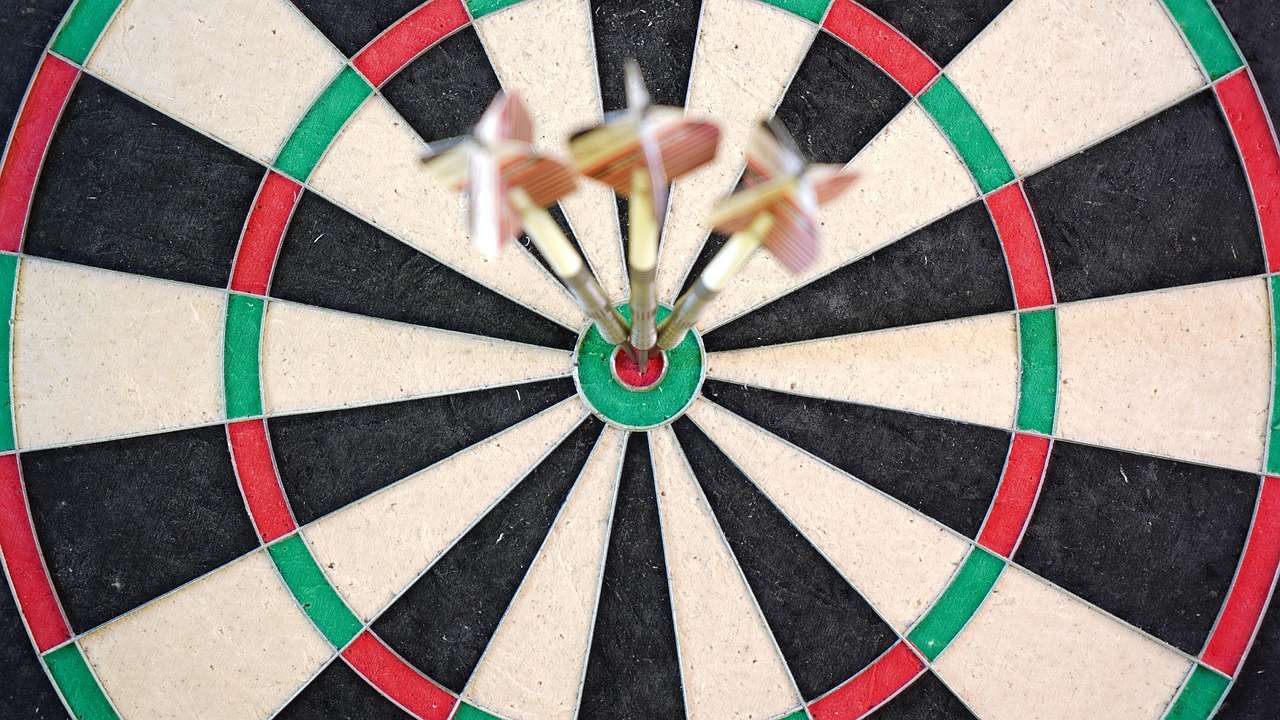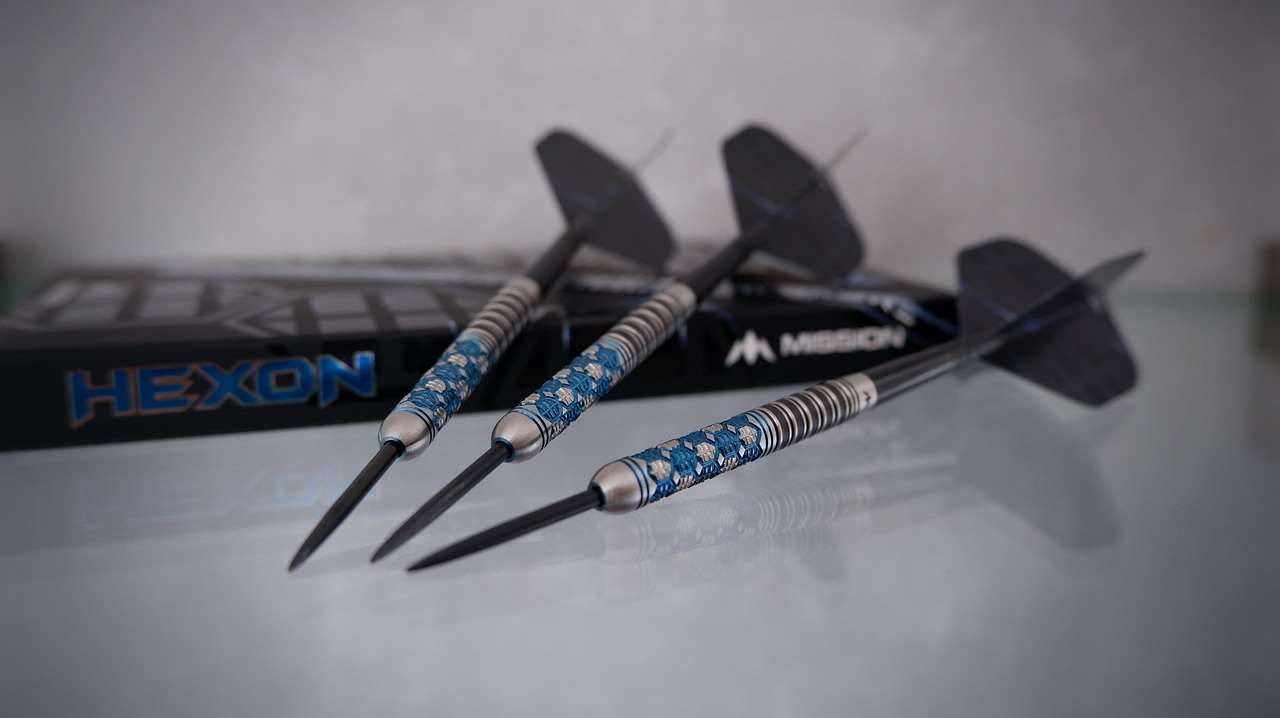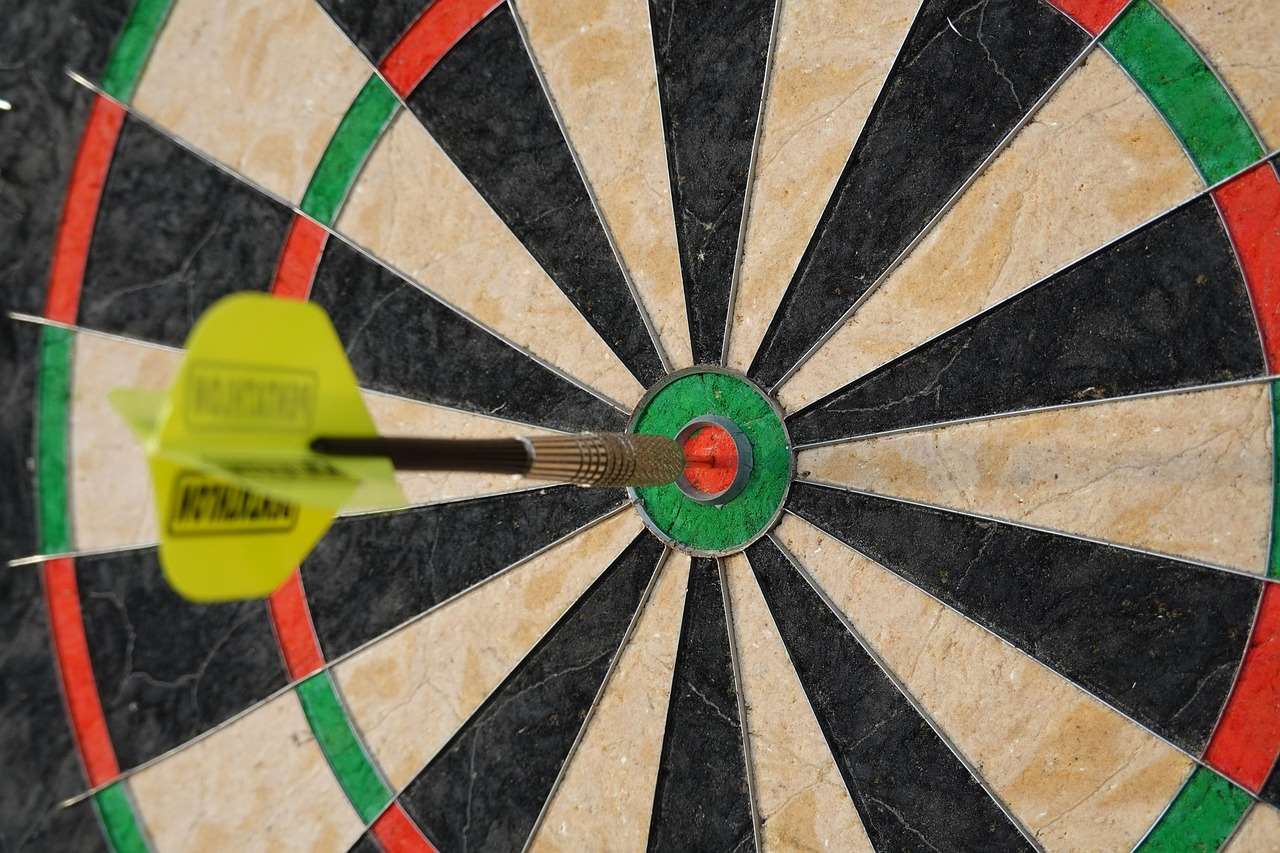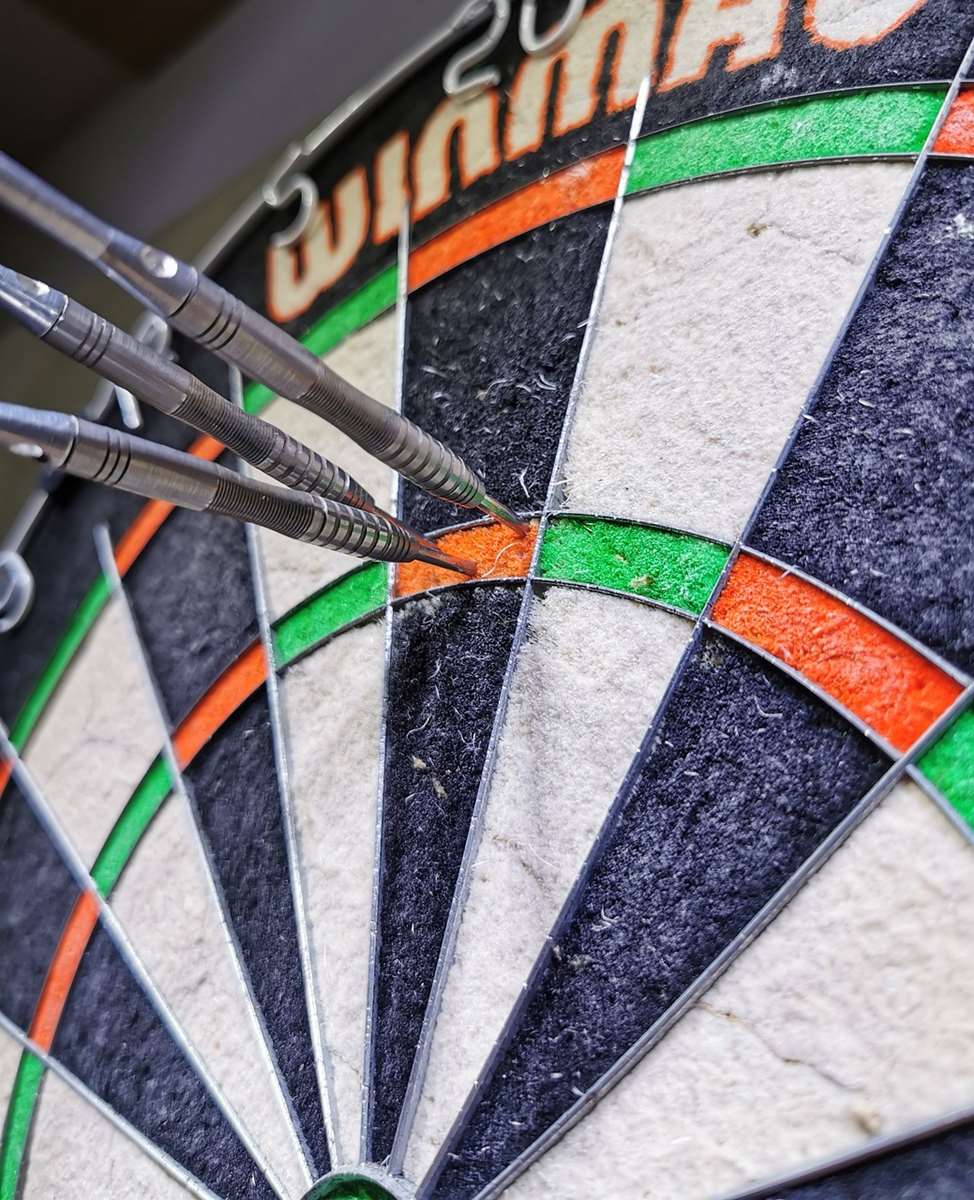Mastering your stance for darts is the foundation of a consistent and accurate throw, directly impacting your scoring ability. This article will guide you through various stances, helping you find the optimal one for your body type and throwing style, while also covering crucial elements of setup, balance, and adjustments for improved performance.
⚠️ Still Using Pen & Paper (or a Chalkboard)?! ⚠️
Step into the future! The Dart Counter App handles all the scoring, suggests checkouts, and tracks your stats automatically. It's easier than you think!
Try the Smart Dart Counter App FREE!Ready for an upgrade? Click above!
Finding Your Perfect Stance for Darts
The stance for darts you adopt isn’t just about looking professional; it’s about creating a stable platform for a repeatable throwing motion. There’s no one-size-fits-all approach, so experimentation is key. Different stances offer varying degrees of stability, comfort, and alignment with the dartboard. Factors to consider include your height, arm length, and natural body mechanics. Ultimately, the best darts stance is the one that allows you to consistently and comfortably deliver the dart to the target. Let’s explore the primary stance options and their benefits.

The Square Stance: Facing the Oche Head-On
The square stance involves standing directly facing the dartboard, with both feet parallel to the oche (the throwing line). This stance offers excellent balance and a clear line of sight to the board. Many beginners find it easy to adopt initially because it feels natural. However, it can sometimes lead to a more forceful throwing motion, relying on the entire body rather than just the arm and shoulder. When using the square stance, ensure your weight is evenly distributed between both feet. If you are interested in finding out where darts player stands, this stance could be a good starting point.
The Angled Stance: A More Streamlined Approach
The angled stance is perhaps the most popular among professional dart players. In this stance, you stand at an angle to the oche, typically with your dominant foot forward. The angle provides better alignment between your throwing arm and the target, reducing unnecessary body movement and promoting a smoother, more controlled throw. This stance often results in greater accuracy and consistency. There are variations to the angled stance; some players prefer a slight angle, while others stand almost sideways to the board. Experiment to find what feels most comfortable and stable for you.
The Side Stance: Minimizing Body Interference
The side stance involves standing almost perpendicular to the oche, with your non-dominant shoulder facing the board. This stance is favored by players who want to minimize any potential body interference with their throwing arm. It creates a very clear and unobstructed path for the dart. However, it can be challenging to maintain balance with the side stance, requiring a strong core and good posture. Players using this stance often benefit from slightly tilting their head to maintain a clear line of sight to the dartboard. Keep in mind the darts practice doubles routine should be adapted to your specific stance to maximize efficiency.
Key Elements of a Solid Darts Stance
Regardless of which of the above mentioned stances you choose, there are several key elements to consider when perfecting your stance for darts. These elements contribute to stability, balance, and consistency in your throwing motion. Focusing on these aspects can significantly improve your accuracy and overall performance.

Weight Distribution: Finding Your Center of Gravity
Proper weight distribution is crucial for maintaining balance and preventing swaying during your throw. Experiment with shifting your weight slightly forward, backward, or to either side to find your optimal center of gravity. A good starting point is to distribute your weight evenly between both feet. However, depending on your chosen stance, you may find that shifting a little more weight onto your front foot or back foot improves your stability and control. Avoid leaning too far in any direction, as this can throw off your balance and affect your accuracy. Think about your throwing motion when weight shifting to find a balance that works well.
Foot Placement: Setting the Foundation
Your foot placement directly influences your body alignment and balance. In the angled stance, for example, the position of your front foot relative to the oche determines the angle of your body. Experiment with different foot positions to find what feels most comfortable and allows you to maintain a clear line of sight to the dartboard. Ensure your feet are firmly planted on the floor to create a stable base. Avoid shifting or shuffling your feet during your throw, as this can disrupt your balance and affect your accuracy. Consider the surface you’re standing on as well, as it impacts foot stability. You can even consider using a dart mat.
Upper Body Posture: Maintaining Alignment
Your upper body posture plays a significant role in your throwing motion. Maintain a straight and upright posture, avoiding hunching or slouching. Keep your shoulders relaxed and your throwing arm loose. Avoid tensing up your muscles, as this can restrict your movement and affect your accuracy. Engage your core muscles to provide stability and support. Imagine a straight line running from your head down to your feet, maintaining this alignment throughout your throw. A stable stance helps make you a true darts winner predictions champion.
Fine-Tuning Your Stance for Darts
Once you’ve established a basic stance for darts, it’s important to continually fine-tune it based on your individual needs and preferences. Experiment with subtle adjustments to optimize your balance, alignment, and throwing motion. Consider these factors as you refine your technique.
Adjusting Your Angle: Finding the Sweet Spot
Experiment with adjusting the angle of your stance relative to the oche. A slight change in angle can significantly impact your alignment with the dartboard. If you’re consistently throwing to one side of the target, try adjusting your angle slightly in the opposite direction. For example, if you’re throwing to the left, try angling your body slightly more to the right. Pay attention to how these adjustments affect your balance and comfort, and find the angle that allows you to throw most consistently. It will make sure your dartcounter kopen investment pays off.
Finding Your Focal Point: Concentrating on the Target
Your focal point is the point on the dartboard that you focus on before and during your throw. Most players focus on the target they’re aiming for, such as the bullseye or a specific number. However, some players find it helpful to focus on a point slightly above or below the target. Experiment with different focal points to see what works best for you. Maintaining a clear and unwavering focus on your target is essential for accuracy and consistency. Remember to relax your eyes and avoid straining them. When you’re ready to start learning how to start darts, focusing on the target is key.

Practice and Repetition: Building Muscle Memory
Like any skill, perfecting your stance for darts requires consistent practice and repetition. The more you practice, the more ingrained your stance will become, and the more consistent your throws will be. Dedicate time to practicing your stance, even if you’re not throwing darts. Simply stand in your stance and focus on your balance, alignment, and posture. This will help build muscle memory and make your stance feel more natural over time. As you become more comfortable with your stance, you’ll be able to focus more on your throwing motion and less on your body position. If you’re playing in a league, you want to make sure you are using a darts scorer automatic system.
Common Mistakes to Avoid in Your Darts Stance
Even with a well-thought-out stance for darts, it’s easy to fall into common pitfalls that can negatively impact your performance. Being aware of these mistakes can help you avoid them and maintain a consistent and effective throwing platform.
Swaying or Leaning: Losing Your Balance
Swaying or leaning during your throw is a common mistake that can throw off your balance and affect your accuracy. This often happens when players try to generate extra power by shifting their weight or moving their body. Avoid swaying or leaning by maintaining a stable and balanced stance. Engage your core muscles to provide support and prevent unnecessary movement. If you find yourself swaying or leaning, try consciously tightening your core and focusing on keeping your body still throughout your throw.
Tensing Up: Restricting Your Movement
Tensing up your muscles, particularly in your shoulders and arms, can restrict your movement and affect your accuracy. Tension can lead to jerky and inconsistent throws. Relax your muscles and focus on maintaining a loose and fluid throwing motion. Take deep breaths to release tension and calm your nerves. If you find yourself tensing up, try shaking out your arms and shoulders to loosen them up.
Inconsistent Foot Placement: Disrupting Your Alignment
Inconsistent foot placement can disrupt your alignment and affect your consistency. Ensure you consistently place your feet in the same position relative to the oche before each throw. Use a visual marker on the floor to help you maintain consistent foot placement. If you find yourself struggling with inconsistent foot placement, try practicing your stance without throwing darts, focusing solely on getting your feet in the correct position. If your gear isn’t up to par, consider checking out a dart armoury online retailer.

Advanced Stance for Darts Techniques
For experienced dart players looking to elevate their game, exploring advanced stance for darts techniques can provide a competitive edge. These techniques require a solid foundation in the basics and a willingness to experiment.
Dynamic Stance Adjustments: Adapting to the Game
Mastering the ability to make subtle dynamic stance adjustments during a match can be crucial. This involves recognizing when your current stance isn’t working optimally and making minor tweaks to improve your alignment or balance. For instance, if you notice a consistent drift in your throws, a slight adjustment to your foot position or body angle might be necessary. This requires a high level of self-awareness and the ability to quickly analyze your performance.
Incorporating Body English: A Controversial Technique
Body English refers to the subtle movements some players make with their body during the release of the dart, often involving a slight lean or twist. This technique is controversial, as it can easily lead to inconsistency. However, some players find that it helps them generate extra power or fine-tune their accuracy. If you choose to experiment with body English, proceed with caution and focus on maintaining a consistent and controlled movement.

Conclusion
Your stance for darts is more than just how you stand; it’s the foundation upon which your entire throwing motion is built. By understanding the different types of stances, focusing on key elements like weight distribution and foot placement, and avoiding common mistakes, you can develop a stable and consistent platform for accurate throws. Remember to experiment, fine-tune your technique, and practice consistently. With dedication and attention to detail, you can unlock your full potential and improve your dart game significantly. Now, step up to the oche and put these techniques into practice – your journey to becoming a more consistent and accurate darts player starts now! You should look into jartex appeal online to learn more about stances.
Hi, I’m Dieter, and I created Dartcounter (Dartcounterapp.com). My motivation wasn’t being a darts expert – quite the opposite! When I first started playing, I loved the game but found keeping accurate scores and tracking stats difficult and distracting.
I figured I couldn’t be the only one struggling with this. So, I decided to build a solution: an easy-to-use application that everyone, no matter their experience level, could use to manage scoring effortlessly.
My goal for Dartcounter was simple: let the app handle the numbers – the scoring, the averages, the stats, even checkout suggestions – so players could focus purely on their throw and enjoying the game. It began as a way to solve my own beginner’s problem, and I’m thrilled it has grown into a helpful tool for the wider darts community.